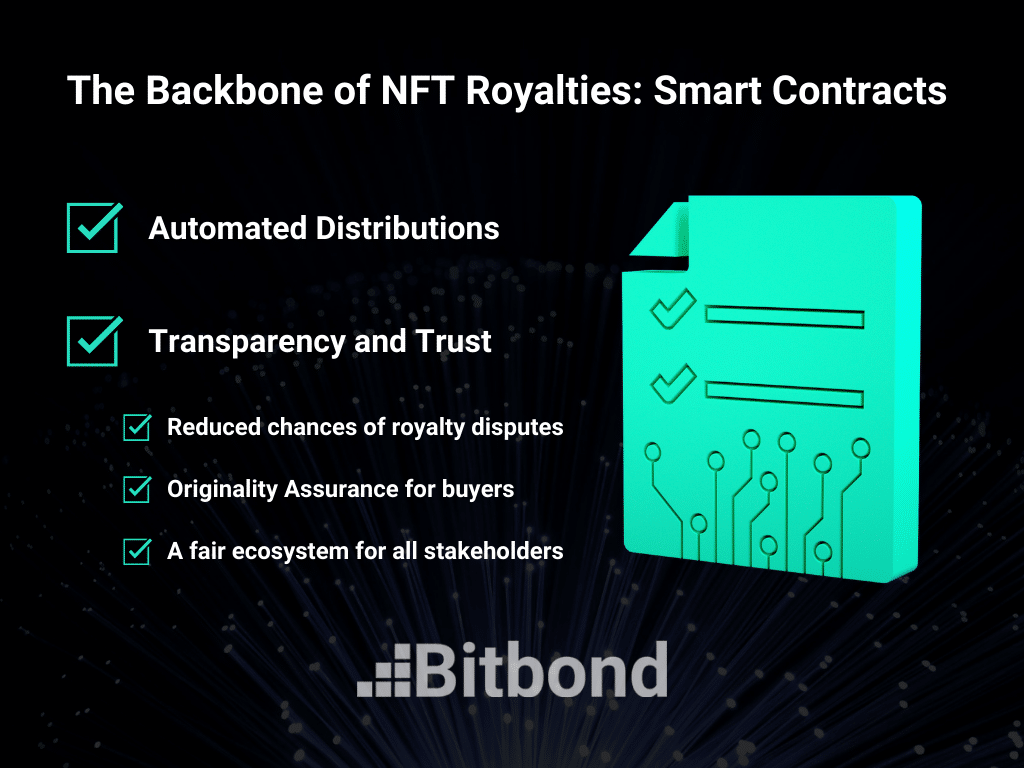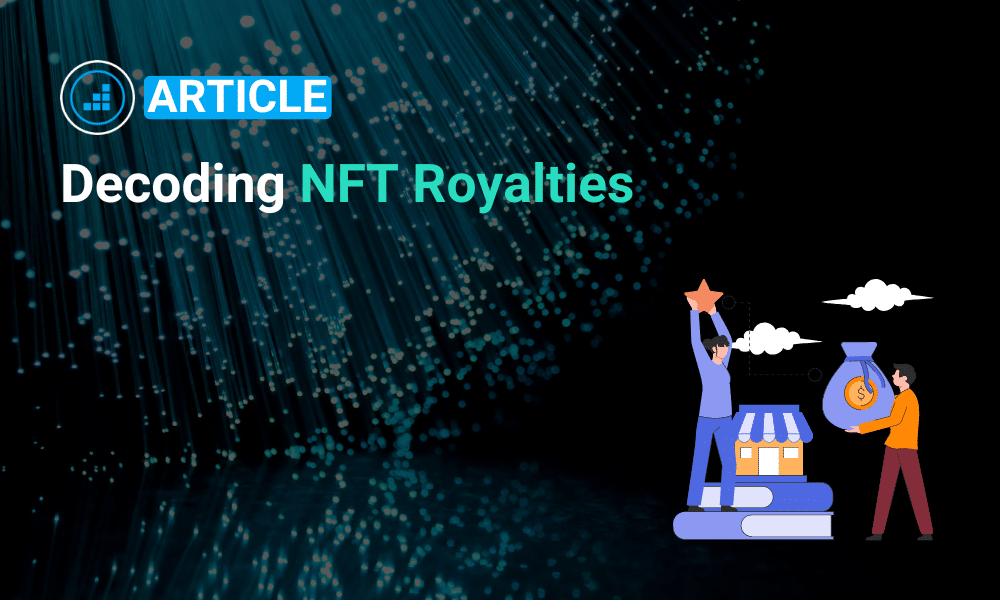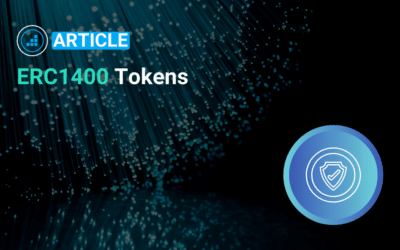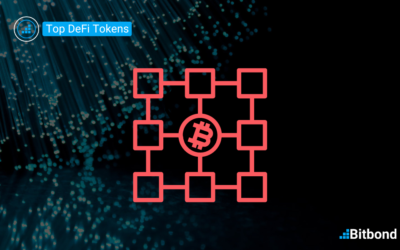Table of Contents
Non-fungible tokens (NFTs) have garnered massive attention, revolutionizing how artists and creators monetize their craft. Central to this digital renaissance is the mechanism of NFT Royalties, a transformative approach ensuring ongoing compensation for creators every time their art changes hands. But what exactly are NFT royalties and how do they guarantee fair remuneration?
Let’s embark on a journey to understand this fascinating intersection of technology and creative rights.
A Deep Dive into NFT Royalties
Definition and Core Importance for Creators
At its heart, an NFT royalty is a predetermined percentage set by the original creator, ensuring they receive a fraction of sales each time the NFT is resold on a secondary market. Unlike traditional art, where artists often benefit only from the initial sale, NFTs enable continuous compensation, mirroring a more sustainable and equitable model.
Advantages include:
- Direct revenue stream from secondary sales.
- Enhanced artist empowerment and financial security.
- Potential for passive income over time.
Role of Smart Contracts in NFT Royalties
The genius behind NFT royalties lies in the domain of smart contracts. These self-executing contracts with the terms of the agreement directly written into code lines enable the automatic distribution of royalties. Every time an NFT transaction occurs, the smart contract recognizes the event, deducts the stipulated royalty, and sends it to the creator’s wallet, ensuring a seamless and transparent process.
Historical Context of NFT Royalties: From Traditional Art to NFTs
The concept of royalties is deeply entrenched in the annals of art and intellectual property. Traditionally, artists often grappled with limited avenues for consistent revenue, especially after the initial sale of their artwork. This disparity was even more pronounced in the music and literary sectors, where artists received royalties for reproductions or broadcasts of their work.
But with the dawn of the digital era, a paradigm shift occurred. The emergence of NFTs has democratized access, ensuring artists aren’t left behind as their creations gain value and popularity. Through the lens of NFT royalties, we witness a reimagined art ecosystem that not only respects but also rewards creativity across every transaction.
How NFT Royalties Are Calculated
Deciphering the mechanics of NFT royalties requires understanding their calculation methods. Unlike the fixed rates seen in traditional art forms, NFT royalties offer more flexibility, aligned with the evolving nature of the digital realm.
- Percentage-Based Royalties The most common method, creators set a specific percentage they wish to receive from subsequent sales. For instance, a 10% royalty implies that if an NFT resells for $1,000, the original creator receives $100.
- Factors influencing percentage selection:
- The perceived value of the artwork.
- The artist’s reputation in the market.
- Prevailing industry standards.
- Factors influencing percentage selection:
- Dynamic Royalties A more intricate system, dynamic royalties adjust based on certain conditions or thresholds. For example, the royalty could decrease after each subsequent sale, incentivizing early purchases.
OpenSea’s Evolution on NFT Royalty Policies
One of the largest NFT marketplaces, Opensea, declared it would no longer impose mandatory royalty fees on secondary NFT sales. This change means that when artists list fresh projects, they can’t enforce a creator fee—typically ranging between 2.5% and 10% for secondary NFT sales.
Rather, artists will now propose their preferred creator fee, effectively making it optional for buyers, who can choose to honor it as a gesture of appreciation or tip.However, there are exceptions to this rule.
Collections hailing from non-Ethereum blockchains or those utilizing OpenSea’s Operator Filter, which was instrumental in ensuring creator fees, will continue to have guaranteed creator fees, but only until February 29, 2024.
OpenSea’s CEO, Devin Finzer, stressed that this policy change doesn’t mark the end of creator fees. Instead, it’s a pivot from their mandatory enforcement. The move is strategic, reflecting the changing tides of the NFT marketplace.
As new NFT platforms, such as Blur, began reducing or entirely forgoing creator royalties, they started attracting a larger user base, at times even overshadowing OpenSea in trading volume. Their adoption of a laissez-faire market approach compelled OpenSea to adjust its royalty stance to stay relevant and competitive.
Despite OpenSea’s adaptability, the decision hasn’t been universally applauded. Many within the NFT community, from other marketplaces to renowned artists, argue that royalties are fundamental to both the NFT renaissance and the sustenance of artist independence.
Even with the royalty revisions, OpenSea retains a 2.5% platform fee for NFT transactions. Contrarily, Blur operates without charging any. That said, OpenSea’s Pro variant does offer fee waivers under specific circumstances tied to creator fees. Notably, OpenSea’s trading volumes have been witnessing a dip, while competitors like Blur have experienced a surge.
The Technological Backbone of NFT Royalties: Smart Contracts
At the epicenter of NFT royalties is the ingenious utilization of smart contracts, ensuring automated and transparent royalty distribution.
- Automated Distributions When an NFT is resold, the associated smart contract instantly calculates the royalty based on the stipulated percentage, forwarding it to the creator’s wallet without human intervention.
- Transparency and Trust By existing on a blockchain, smart contracts ensure all transactional data is open for verification, cementing trust among buyers and safeguarding the rights of creators.
- Benefits of this transparency:
- Reduced chances of royalty disputes.
- Assurance for buyers about the authenticity and originality of the NFT.
- Reinforcement of a fair ecosystem for all stakeholders.
- Benefits of this transparency:
Alt Text: How Smart Contracts the backbone of NFT Royalties and their benefits.
Issues with Transferring NFT Royalties
While NFT royalties offer transformative possibilities, they’re not devoid of challenges, particularly when royalties are transferred or when NFTs move across different platforms.
- Platform Incompatibility An NFT minted on one platform might not retain its royalty parameters when transferred to a different marketplace, leading to potential revenue losses for creators.
- Standardization Concerns The absence of a universal standard for NFT royalties means different platforms might handle them uniquely, causing inconsistencies.
- Implications of these challenges:
- Compromised revenue streams for creators.
- Difficulty in tracking royalties across multiple platforms.
- A potential deterrent for creators to mint NFTs without robust cross-platform support.
- Implications of these challenges:

Achieving Fairness and Standardization: EIP-2981
To address the previously highlighted inconsistencies in NFT royalties, we turn our attention to Ethereum’s proposed standard for royalties, known as EIP-2981.
- A Proposed Standard EIP-2981 aims to introduce a consistent royalty mechanism across all Ethereum-based NFT platforms. This uniform approach ensures that artists receive their due cut, regardless of the marketplace.
- Prospects and Adoption Many NFT platforms have shown interest in EIP-2981. Its widespread adoption would simplify cross-platform NFT transfers, ensuring artists don’t miss out on their rightful earnings.
The quest for standardization reflects the digital art world’s commitment to upholding artists’ rights. However, even with these advancements, there’s room for innovation in how we manage and distribute royalties.
Introducing Token Tool: Elevate Your NFT Experience
Now, while EIP-2981 promises improved standardization, ensuring the most efficient royalty distribution can be enhanced with the right tool. Enter Token Tool by Bitbond.
- Beyond Mere Tokenization, Token Tool isn’t just about creating tokens. It offers an end-to-end solution, ensuring that artists and creators get the most out of their digital assets. At later stage in its product roadmap, Token Tool will be introducing a royalty management feature within its Create NFT function.
Token Tool is a testament to how technological advancements can further the goals of the NFT community, placing power and control back into the hands of creators.
Conclusion: The Bright Future of NFT Royalties
As we journey through the digital renaissance, NFT royalties stand as a beacon of hope for creators, promising them a share in the prolonged success of their creations. The combination of proposed standards like EIP-2981 and tools like Token Tool show a promising trajectory for the NFT ecosystem.
Amid this evolution, one thing remains clear: the intent to champion the rights and earnings of creators is stronger than ever. As technology and standards continue to advance, the landscape for NFT royalties will only become more favorable, paving the way for a harmonious digital art world.




